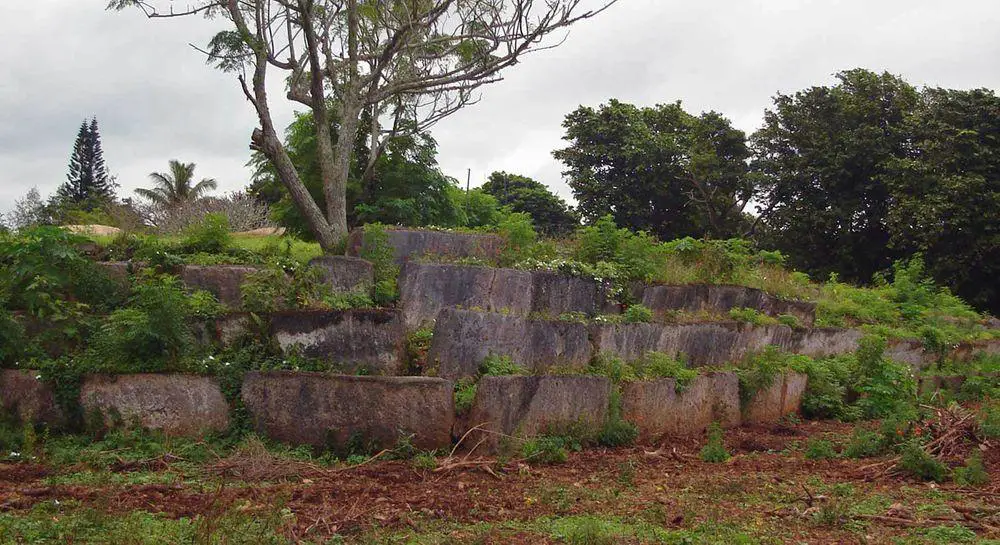The Royal Tombs of Lapaha are the resting places of the royal Tu’i Tonga dynasty, who along
with other paramount chiefly lines established the Tongan state and monarchy that continues
today under with the reign of His Majesty King Tupou VI. Tonga is the only Pacific nation with
a continuous traditional monarchical system that was maintained into the modern era. The Royal
Tombs symbolize the semi-divine status of the descendants of the 1st Tu’i Tonga ‘Aho’eitu, who
was born to a woman from Popua and the sky god Tangaloa ‘Eitumatupu’a, with Royal Tombs
referred to as ‘langi’ (sky).
The concentration of large tombs at Lapaha testifies to the power of Tongan kings who were
both spiritual and secular leaders of Tonga for 600 years, with traditional royal funerals
continuing at the new royal cemetery of Mala’e Kula at Nuku’alofa where the kings and queen of
modern Tonga are buried. The history of the ruling chiefly lineages of Tonga is displayed in the
size and location of tombs and elite mortuary architecture contributes a unique record of a
maritime state in prehistoric Oceania.
The langi architecture and construction at Lapaha/Mu’a was initiated by Talatama (the 12th Tu’i
Tonga) when the royal residence was moved from Heketa at Niutōua to Mu’a around 1300 AD.
Talatama and his brother Talaiha’apepe helped their father Tu’itātui with the completion of the
Ha’amonga, and then moved the capital to Mu’a. One of the main reasons for the move was
because of Mu’a having a better anchorage for the double hulled canoes needed for inter-island
transport. Talatama and his brother Talaiha’apepe began the first monumental constructions at
Lapaha including a fortification, compound ditches and the first Royal Tombs. This practice of
building royal tombs continued until the modern era.
Four significant historical and cultural elements are epitomized by the royal mortuary structures
at Lapaha. First is the development of an Archaic State under a semi-divine monarchy that
unified and organized – for the first time – a dispersed Pacific Islander population. Second, the
burial architecture of the Tu’i Tonga represents an important historical record of Dynastic Power
spanning 600 years. Third, the monumental tombs at Lapaha hold evidence for Royal Funerary
Rites that are still practiced in tandem with Christianity by the current royal family, chiefs and
people of Tonga. Fourth, many other elements of Tongan culture originated in the Tu’i Tonga era
including chiefly titles, songs, dances, artisanal crafts and traditional ceremonies. The Royal
Tombs at Lapaha are the most important sites of the Tu’i Tonga dynasty and are the source of
living cultural traditions that define the Tongan way of life.

